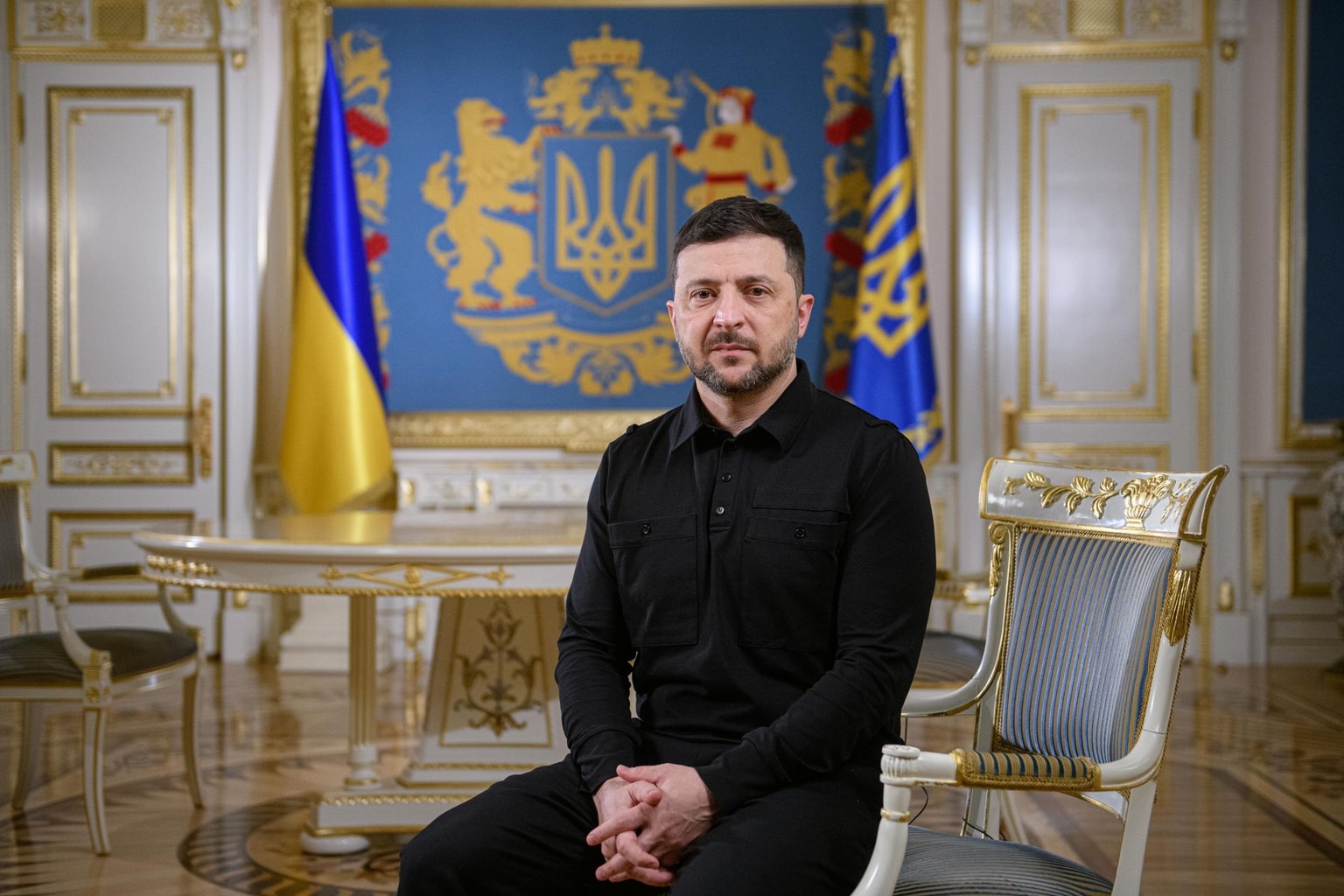
After a decade-long battle, Kyiv showcases Crimean treasures that Russia wanted to steal
While Kyiv hails the return of some Crimean artifacts, the rest of the Russian-occupied peninsula's cultural heritage is in peril.
Items of the "Scythian Gold" collection are shown during the unpacking at the National Museum of History of Ukraine on the Kyiv Pechersk Lavra territory on Nov. 28, 2023 in Kyiv, Ukraine. (Vitalii Nosach /Global Images Ukraine via Getty Images)
Following a decade-long battle, a substantial part of Crimean artifacts is now on display in Kyiv until the occupied peninsula is liberated, officials say.
After a lengthy legal struggle, the return of the so-called "Scythian gold" last year was, for Ukrainians, an important cultural milestone amid the ongoing decade-long war with Russia.
The artifacts originated from four Crimean museums—Bakhchysarai, Kerch, Simferopol, and Sevastopol—and were exhibited at the Allard Pierson Museum in Amsterdam in February 2014, when Russian troops moved in to occupy the peninsula and its museums.
The artifacts were stuck in legal limbo, with now-occupied museums demanding the return of the items, whereas Ukraine attempted to return its cultural heritage home.
After nearly ten years, a collection of 565 artifacts, or 2,111 items, was finally returned to Ukrainian-controlled territory.
The items shown in the Treasury of the National Museum of the History of Ukraine have been digitized, a practice used by many Ukrainian museums to preserve the cultural heritage amid Russia's near-daily missile attacks.
"This (the return) is not only a museum matter but a matter for the entire country. It is important for future steps. This exhibition is about the past, but it is actually a bridge to the future," said archaeologist Yurii Polidovych, a leading researcher at the museum.

Scythian gold
Known as "Scythian gold," most of the artifacts aren't actually made of precious metals. The majority of the items are made of limestone, bronze, clay, iron, wood, and other materials.
These artifacts cannot be attributed to the Scythians alone. They were used by various nomadic peoples who lived on the peninsula from approximately the 5th century BCE to the 7th century AD, such as the Sarmatians, Goths, and Huns.
The very definition — "Scythian gold" — was largely made up by the media, experts say.
The entire collection is estimated at about 1.5 million euros ($1.6 million), a modest price for the one-of-a-kind artifacts.
Many of the items were found in necropolises, large city cemeteries. The most precious items were retrieved from the Ust-Alma necropolis, in southwest Crimea — ancient lacquer jewelry boxes made some 2,000 years ago in China.
"Each of the items tells its own story about the ancient people who lived in Crimea. These treasures are not about price tags, but about value, something that matters for spirituality, culture, and history," Polidovych told the Kyiv Independent.
Years-long battle
The battle for the Crimean artifacts was long, gaining national attention in the process.
Four Ukrainian museums in Crimea, now under Russian control, filed a lawsuit with the Amsterdam District Court demanding the return of the artifacts to the occupied peninsula. Kyiv demanded that the treasures be handed over to the owner of each exhibit, meaning Ukraine.
The court battle lasted for nine years, with the artifacts remaining in Amsterdam for the duration of the legal process.
"The European judiciary got trapped. They began to sort national legislation and European legislation. But there was a clear question: how will these (artifacts) be taken to Crimea from Amsterdam?" Evelina Kravchenko, a senior researcher at the Institute of Archeology of the National Academy of Sciences of Ukraine, told the Kyiv Independent.
In 2016, the Dutch court ruled that the Crimean artifacts should be transferred to Kyiv, but the Russian-controlled museums appealed. After a dragged-on trial and a rejected Russian appeal, the final decision in favor of Ukraine was reached only in 2023, as Russia was waging an all-out war against Ukraine.
"The current decision is one of strategic importance for the future of things that enter Europe from Ukraine illegally. In particular, from Crimea, the things that can be illegally exported by Russia, private individuals, and so on," Kravchenko said.
Polidovych agrees that the decision was crucial.
"The most important thing in this case is that it recognized Crimea as a part of Ukraine, and the cultural and historical heritage of Crimea is part of the common cultural space of Ukraine," said Polidovych.
Ukraine's debt for storing the exhibits in the Dutch museum was waived. Despite Russia's ongoing full-scale war, the artifacts were returned to Ukraine in November 2023.
Heritage at risk
As of 2014, the Crimean museums had over 930,000 items belonging to the Museum Fund of Ukraine, according to the National Museum of the History of Ukraine.
Yet, the artifacts brought back from the Netherlands are the only archaeological treasures returned to Ukraine-controlled territories since 2014.
Approximately 1.5 million museum artifacts remain in Russian-occupied territories of Ukraine, acting Culture Minister Rostyslav Karandieiev said.
Attempts to destroy or appropriate Ukrainian cultural heritage have been a Russian policy for centuries, and the attacks on museums and cultural sites became a hallmark of Moscow's all-out war. According to the Culture Ministry, at least 1,085 cultural heritage sites in Ukraine have been damaged by Russian forces as of early July.

Exhibits from Russian-looted museums in the occupied parts of Ukraine's south were taken to Crimea, while cultural items from the occupied peninsula, such as paintings and sculptures, are being transferred to Russia.
"This is not a mass phenomenon yet, although requests from Russian museums to take museum items out of Crimea have become much more frequent recently," Kravchenko told the Kyiv Independent.
Over the years, Russia has excavated huge areas in Crimea and appropriated the found artifacts. It also demolished several cultural heritage sites that have been around.
Moscow destroyed the UNESCO-listed city of Chersonesus, an ancient Greek colony founded over 2,500 years ago, located within the city limits of occupied Sevastopol, replacing the original sights with new buildings.
"It will be possible to return (stolen cultural items) only after significant change depending on how the war ends, what kind of agreement will be signed, and who will sign it. If they end up on Russia's territory, it will be very difficult to bring them back," Kravchenko said.












